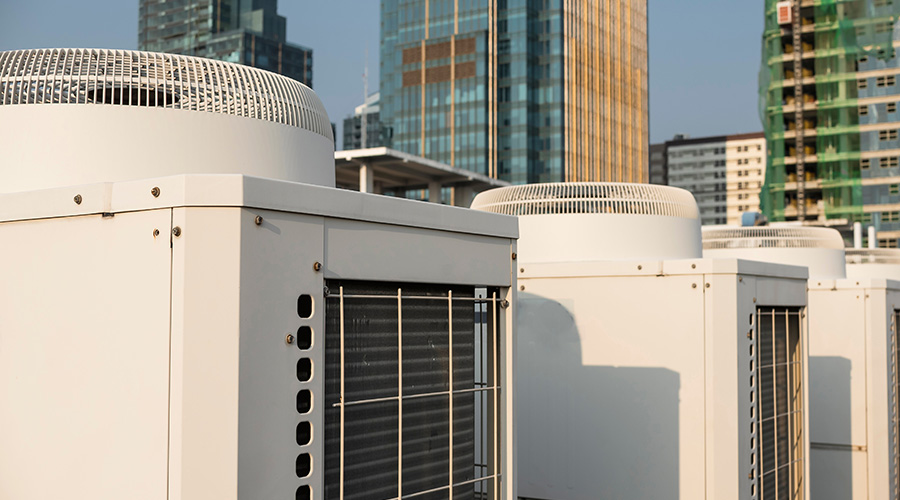Measurement and Verification Can Help Maintain Efficiency, Improve LEED Scores
"If you don't measure it, you can't manage it." How often is this ignored in the operations and management of buildings? And what's more, by most accounts, nearly every building has at least one problem (and usually many more) that could easily be corrected simply by understanding how the building is using energy. Measurement and verification (M&V) can be an excellent vehicle for facility managers and building operators to maintain the long-term health and efficiency of their buildings. Measurement and verification is also an important part of LEED v4.
There are many interpretations of what M&V is — some might say it is a LEED credit; others might view it as a version of on-going commissioning. Under LEED for New Construction (see "What Does LEED Say?" on page 18), M&V is intended to help ensure that the systems designed into a facility actually work as anticipated during operation, and that the facility doesn't over-use energy. Other interpretations of M&V may include the measurement and monitoring of building and system performance over the life of the facility, similar to ongoing commissioning requirements in LEED for Existing Buildings: Operations and Maintenance (LEED-EBOM).
Helping facility managers understand how systems in a building are functioning during occupancy could make a huge difference in terms of building operations and energy savings. After all, if you don't measure how well your building is operating, how will you know that it's operating at peak potential? This is important for all buildings, and especially important for those with complicated or unique energy efficiency measures designed to maximize performance.
A significant benefit of the LEED M&V credit is that it requires metering and monitoring that, if continued over the life of the building, could provide the data to enable verification that the building continues to work to its potential for a long time. But because the M&V credit is perceived as time-consuming and expensive, it is one of the least achieved LEED credits. Another issue with it is that it creates, essentially, a snapshot in time — it is only required during the first year of occupancy. There is no requirement to continue with M&V beyond that year. Without a long-term commitment, the M&V credit can be a pretty pricey credit to go after due to the metering and energy modeling that is required. For those who only want the LEED points, the LEED M&V credit, which is based on the International Performance Measurement and Verification Protocol (IPMVP), may fall short of expectations.
The U.S. Green Building Council is completely revamping the M&V credit for LEED for New Construction v4, which is due out this fall. Now, instead of requiring an M&V plan and adherence to the IPMVP, projects can achieve a point for installing advanced metering, including whole building metering and metering of every end use that is 10 percent or more of the total load. Meters are required to provide both consumption and demand data and to provide it in a remotely accessible form. While building owners may still view this as too expensive, this new credit provides the tools for continuous monitoring of systems. But keep in mind, as Mark Stetz of Stetz Consulting says, "Hardware is not a substitute for paying attention. You need the hardware, but you also need to be disciplined to use it."
Even if a building decides not to work towards the M&V credit, that doesn't mean that doing some sort of M&V isn't a very good idea. When project teams don't recognize this opportunity, they don't incorporate standard tools that are available in most buildings, such as the building automation system and utility bills, to perform continuous monitoring and tweaking of systems.
M&V: What Does LEED Say?
The Measurement and Verification credit (Energy and Atmosphere, Credit 5) under the LEED for New Construction rating system requires the following strategies to earn three points:
1. Create a Measurement and Verification plan that identifies all aspects of the intended M&V process as well as the metering systems that need to be installed to accomplish it.
2. Install meters to monitor end uses in the building. This can be done in a number of ways, including using the utility company electricity and gas meters (for whole building monitoring) together with submetering of specific end uses such as HVAC and lighting systems.
3. Collect metered data and maintain trend logs over a period of one year after initial occupancy.
4. Use a calibrated energy model to verify that the building is operating to potential and to identify where it is not. The calibrated energy modeling includes two energy models. One is a baseline, which is based on ASHRAE 90.1 requirements but is calibrated to match actual weather data and occupancy fluctuations during the yearlong time period that data is being collected. The other model is calibrated in the same way but is based on the actual systems (not ones required by 90.1) that have been included in the final building. This model should represent actual utility bills in the building.
Results from these two models are compared to each in a similar manner to the comparisons made during the design phase of the project. To the extent discrepancies between anticipated and actual usage are discovered, the person responsible for performing the M&V function would identify systems not operating up to potential and recommend ways to fix systems and modify protocols.
While a calibrated energy model, such as required in the LEED M&V credit, can be a great tool for studying the benefits of various energy efficiency measures, finding people who are really good at creating such models is not easy.
— Helen Kessler |
Related Topics:














